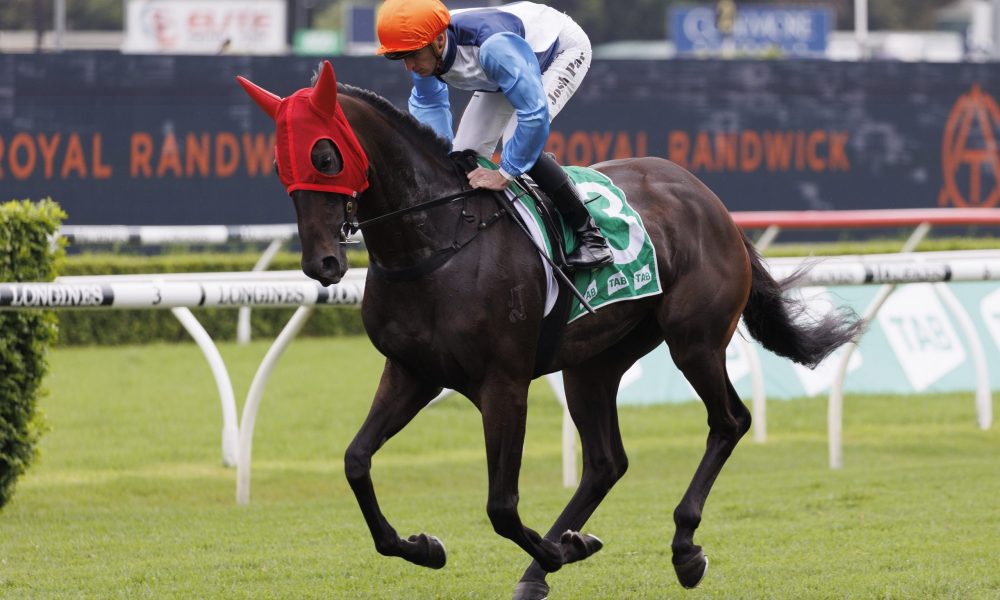Duais’ spring campaign diverted to Melbourne after irregular heartbeat

Cummings’ multiple Group 1 winner set for Hawkesbury course proper barrier trial following Winx Stakes withdrawal
Duais (Shamus Award), a dominant weight-for-age performer in the autumn and Australia’s leading chance in the Caulfield and Melbourne Cups, will barrier trial on her home track this morning to get her spring campaign back on track.
The Edward Cummings-trained five-year-old, winner of the Australian Cup (Gr 1, 2000m) and Tancred Stakes (Gr 1, 2400m) in the autumn, will trial on the Hawkesbury course proper over 1000 metres against a field which includes the Annabel Neasham-trained Zaaki (Leroidesanimaux) and Top Ranked (Dark Angel) after being a race morning scratching from Saturday’s Winx Stakes (Gr 1, 1400m) at Randwick.
Duais was withdrawn from her scheduled first-up run after Cummings became concerned with the mare’s heart rate after completing a routine race morning canter, later diagnosing her with atrial fibrillation, a condition she also suffered during trackwork as an autumn three-year-old.
Cummings yesterday confirmed Duais appeared to have shown no ill effects from the setback and that she would resume in the Memsie Stakes (Gr 1, 1400m) at Caulfield this Saturday providing the daughter of Rosemont Stud’s Shamus Award (Snitzel) trials satisfactorily.
“It’s sort of normal work, a five-furlong final gallop, which she would have had anyway,” Cummings told ANZ Bloodstock News.
“She’s just short of a gallop for the Memsie and that’s what the trial’s there for, but it’s also part of the protocol for horses recovering from atrial fibrillation, they (stewards) demand that a horse trials without issue.”
Regular readers of stewards reports will be familiar with the atrial fibrillation issue often diagnosed in horses who have performed below expectations in races, but the prevalence of the condition during trackwork is unclear.
“I would say the only stables that can pick it up like we have are the ones using heart rate monitoring systems. I know they’re becoming more and more popular but I also know that not everyone uses them for whatever reason,” Cummings said.
“Even stables that do, arguably they don’t have them on their horses on race morning, but we let our horses stretch their legs and we like to put the E-Trakka on them to make sure everything is fine.
“It’s just another method of ensuring they’re healthy. I know for a fact that other stables would put their horses in the pool or for a trot and put a normal saddle on them (to do that) and not an E-Trakka.
“We’re not trying to say that we’re better than anyone else or anything like that, but it’s a virtue of the processes that we’ve put in place that we found the issue on Saturday morning and acted accordingly, saving ourselves from potentially something small developing into something much bigger.”
After the Memsie Stakes, Cummings intends to revert to his original plan outlined for Duais by returning to Sydney for the George Main Stakes (Gr 1, 1600m) second-up at Randwick on September 17.
“I would prefer to bring her back from the George Main three weeks later and then head back down for the Turnbull (at Flemington on October 1),” the trainer said.
“I have been extremely happy with her and I think she’s the best she’s ever been. She’s had a minor hiccup, which saved her from her intended first-up run, but I suppose we knew if there was to be anything wrong with her and we couldn’t go to the Winx Stakes, then we had the back-up option of going a week later into the Memsie.”
Josh Parr, who was scheduled to ride Duais at Randwick on Saturday, will be in saddle for the Memsie Stakes, the Sydney jockey maintaining his association with the mare which was successfully formed last autumn.
Duais is the $11 favourite for the Caulfield Cup (Gr 1, 2400m), $18 for the Cox Plate (Gr 1, 2040m) and $15 second favourite for the Melbourne Cup (Gr 1, 3200m).


